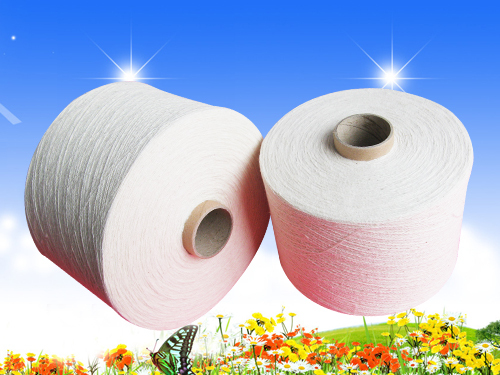Import yarn growth has a great impact on cotton textiles

According to customs statistics, China’s total trade exports in April 2015 were 1.08 trillion yuan, a year-on-year decrease of 6.2%, a decrease of 8.4 percentage points from March, a total import volume of 873.9 billion yuan, a year-on-year decrease of 16.1%, and a trade surplus of 210.21 billion yuan. 85.2%. Among them, total exports of textiles and garments were approximately US$19.876 billion, a year-on-year decrease of 16.33%, and a month-on-month increase of 58.19%. From January to April, total textile and apparel exports totaled US$79.657 billion, a year-on-year decrease of 2.72%. Contrasting with the continuous decline in exports of textiles and garments, China’s cotton yarn import volume was in stark contrast. From January to March 2015, China’s cumulative import of cotton yarn was 590,600 tons, an increase of 15.26% over the same period of last year. Cumulative imports of cotton fabrics were 136,626,600 meters, a year-on-year decrease of 15.07%. The significant increase in imported cotton yarn has a great impact on the entire cotton textile industry chain.
According to statistics from relevant departments, from September 2014 to March 2015, China’s imports of cotton and cotton yarn were 1.01 million tons and 1.13 million tons, respectively, while imports of cotton in 2012/13 and 2013/14 were 2.74 million tons respectively. The import volume of cotton yarn was 1.06 million tons and 1.24 million tons, respectively. This year's cotton yarn import volume exceeded cotton imports for the first time in recent years. With regard to the continuous and substantial increase in the imports of low-grade and low-priced yarns, the author believes that the relevant government departments should be aware of the ** and risks and introduce measures as soon as possible to limit and regulate the import of external yarns. Otherwise, not only the small and medium-sized cotton textile enterprises, but also the middle Businesses are even more detrimental to cotton farmers' enthusiasm for planting cotton and stabilizing cotton planting areas.
First, from the point of view of cotton raw materials, there is no restriction on the influx of low-grade external yarns, which is consistent with the role of the non-returning of the State Reserve Cotton Reserves, which is to accelerate the suspension of production and closure of small and medium-sized spinning mills and weaving mills. Recently, the rumors about the state's plan to dump the deposit have once again mounted on the dust. The author believes that if the spot price of domestic cotton does not go up and the cotton price does not fluctuate significantly, the date of throwing the deposit must be postponed; in addition, if the tariff does not have to be raised. Measures such as setting import quotas for cotton yarns restrict the import of external yarns, and the national reserve cotton auctions will not achieve the desired results. Domestic weaving factories and garment factories will all purchase cotton yarns from India, Pakistan, Vietnam, and Indonesia that are of “high quality and low priceâ€. A lot of low-grade, low-quality state reserves of cotton have thrown cotton textiles? Unless the bid price is substantially reduced, domestic yarn does not have any advantage in price.
Second, the actual space for industrial upgrading and product structure adjustment of China's cotton textile enterprises is very limited. The yarn cotton market can no longer take the old road of cotton. From the investigation point of view, no matter what the government departments in Guangdong, Zhejiang, Fujian and other countries put forward, “changing cages for birds†or textile companies in Shandong, Jiangsu, Henan, etc., “going to the sea and moving westward†are, in the final analysis, to reduce labor and production and marketing costs. Reducing land and tax pressures, products are adjusted from 32, 40 mainly to 50S, 60S or combed yarns; from full-cotton yarns to blended, differentiated fibers, and new fibers (such as bamboo fiber yarns, Tencel, Modaner, etc.) ); new compact spinning, turbo spinning, spinning spinning and other equipment, increase the number of cotton yarn, improve yarn quality. Taking into account China's 120 million spindles, there is a serious excess of production capacity, while the demand for high-yield yarns and new product markets has limited market capacity and insufficient growth momentum. It is impossible to grab a “cakeâ€, so SMEs still need to produce low-cost and low-cost products. End products, to solve the employment of staff and weaving plants, garment factory demand; According to statistics from relevant departments, China's textile and garment industry, the number of small businesses accounted for about 90%.
Third, due to the difficulty of achieving high-quality machine-made cotton in Xinjiang and the inland cotton regions, and from the perspective of R&D and production of cotton seeds, the quality of Chinese cotton in the “three wires†consistency and other indicators in 3-5 years Catch up with and surpass some difficulties in the United States and Australia. Spinning high-yarn yarns above 60S will encounter bottlenecks. If the import of cotton yarns is not restricted, domestic cotton prices will be tied up by foreign spinning mills and exporters in West Africa, Central Asia, and even India. Level (Except Xinjiang Hand Picked Cotton). Not conducive to cotton cultivation in 2016 and beyond. Confidence in farmers is also an impact. What about cotton pricing power and area stability?
Flat Sheet,Soft Touch Bed Sheet,Comfortable Bed Sheet,Practical Fitted Bed Sheets
SHAOXING CITY JINYAO TEXTILES CO.,LTD , https://www.jinyaotextile.com